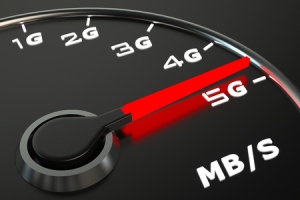IoT (the Internet of Things) is the prime driver of digital transformation for the enterprise, and IDC predicts that IoT market spend will reach $1.4 trillion (€1.19 trillion) by 2021. That’s a big number – but it’s in contrast to the statistic that shows as many as a quarter of all companies quit transformation projects before completion.
There is a lack of knowledge around IoT implementation, says Alon Segal, chief technology officer at Telit. Ask most people to describe the IoT, and they’ll most likely talk about billions of devices. There will be an underlying assumption that this network of devices makes it possible and affordable to collect accurate business information, process it into actionable knowledge, transmit it to the right person and take decisions that improve business performance.
Today’s competitive markets demand creative and innovative solutions and doing all this, it is assumed, will allow businesses to solve problems, develop new applications and stay ahead of the game. But that vision will not materialise until the complexity behind the implementation is removed.
Many large players who should be in this market are not yet fully engaged. The reality is a complicated, messy network of incompatible bearers and devices that resemble a badly-cut jigsaw puzzle. And very few enterprises have the required knowledge to make it all fit together.
The addressable market is huge; numerous verticals can – and eventually will – benefit from the implementation of the IoT. These include asset tracking, healthcare, security, telematics, point of sale, wearables, telemetry, industry, energy, smart metering: the list goes on. In fact, IoT will benefit any sector where data is of value, so arguably the opportunities are limitless.
But to become those data powerhouses, enterprises need more information, more guidance and more help to leverage the potential. For many organisations, a successful transformation will stand or fail on the ability of the business to sift, measure, analyse, and respond to the data that it needs; and that it can collect efficiently and effectively from its customers, or its machines, operating systems and personal devices.
However, the complexity of actually creating this IoT is their biggest roadblock to the transformation the data could deliver. We need to remove complexity, remove unnecessary costs and introduce simplicity – and that means making all the elements of the IoT work together seamlessly.
In short, the future success of the IoT will be underpinned by interoperability. But there is currently no single standard in this space, there is no single means of interconnect. The data can come from multiple sources and, given the sensitivity of some of the data that will be handled, interoperability across the IoT needs to be both open and secure at the same time. Gartner cites that more than 50% of all IoT projects are expected to expose sensitive information in 2020 due to the failure of hardware security, a significant increase from less than 5% in 2016.
This means the path to simplicity begins by aligning the data whatever the source. It requires federating and normalising data from multiple sources so that it can be shared in a consistent model with appropriate security to control access and protect the data’s properties.

4G has achieved a lot towards this end and 5G promises to take this further along the evolutionary path. LTE Mobile IoT (Cat- and NB) was designed to function as the foundation for 5G low power, massive IoT device networks.
Release 15, due to be approved in June, is the first 3GPP specification for 5G with a strong IoT element. Release 15 IoT enhancements include small-cell support for NB-IoT, and TDD support for in-band, guard-band and standalone operation modes.
With LTE-A Pro and 5G now evolving together, the need for interoperability is paramount to ensure the IoT ecosystem develops seamlessly to ensure it can deliver the expected business benefits. But as 3GPP plans to submit both LTE and New Radio (NR) to the ITU under the umbrella of 5G, there will undoubtedly be challenges for the early adopters.
The aim must be to reduce this complexity, as a key part of the innovation is the value to the enterprise customers. Currently, they have to manage too many things unrelated to their IT knowledge – and when it comes to the adoption of IoT, this is holding the market back.
Building the right architecture takes expertise, it also involves a willingness to collaborate, and the flexibility to adapt to changing demands and technology evolution. For all the talk of Industry 4.0, we are still evolving Generation 1 of the IoT, and experience is critical.
5G is designed to deliver the framework for full integration of corporate IT systems and the IoT. For the enterprise though, the bearer becomes secondary; the enterprise by and large doesn’t care about the underpinning technology. While the industry talks about the Fourth Industrial Revolution, our customers simply ask: “Can you solve my business problem?”
There needs to be a shift from a technology-centric approach to a customer-centric one – where IoT platforms and services pull together the full collection of systems effectively and seamlessly to achieve successful integration and operation. That’s when we’ll see the IoT delivering better business results – as our customers such as Honda, John Deere, and Johnson & Johnson would testify.
Simplicity and scalability will depend on interoperability and will drive the next step of evolution once the technical complexity is removed. Ensuring the ease of interconnecting heterogeneous deployments will take the industry forward, create new revenue streams and enable massive scaling of the IoT to create the global network that it is destined to be.
The author of this blog is Alon Segal, chief technology officer at Telit
Comment on this article below or via Twitter: @IoTNow OR @jcIoTnow










